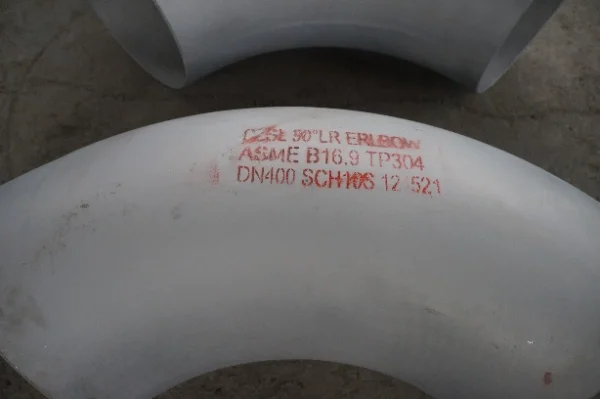Stamping elbow advantages and material introduction
The advantages of stamping elbow
(1) stamping processing, high production efficiency, and easy to operate, easy to achieve mechanization and automation, because stamping is dependent on the die and stamping equipment to complete the process, the number of strokes per minute for the ordinary press can reach dozens of times, high-speed pressure to hundreds of times per minute or even more than a thousand times, and each stamping stroke may get a stamped parts.
(2) Stamping generally does not generate chips and scraps and consumes less material, and does not require other heating equipment, so it is a material-saving and energy-saving processing method, and the cost of stamping parts is lower.
(3) Stamping can process parts with a large range of sizes and complex shapes, such as small stopwatches of clocks and watches, large longitudinal beams of automobiles, and coverings, etc. In addition, the cold deformation and hardening effect of materials during stamping makes the strength and stiffness of stamping higher.
(4) In stamping, because the die ensures the size and shape accuracy of the stamped parts and generally does not damage the surface quality of the stamped parts, and the life of the die is generally long, the quality of stamping is stable and interchangeable, and it has the characteristic of "one mold".
The forming process of stamping elbow is complex and requires welding according to different materials and applications, and gradual forming under certain pressure. Stamped elbows are formed in accordance with certain procedures, and the corresponding process is strictly adhered to, otherwise the quality of the produced stamped elbows will be a problem. Depending on the need, a circular ring shell can be cut into four 90 ° elbows or six 60 ° elbows or other specifications. The process is suitable for manufacturing any size of large pushed elbows with a ratio of elbow center diameter to elbow inside diameter greater than 1.5 D. It is an ideal method for manufacturing large pushed elbows. This process forming method is used in the production of different elbows, showing good use value in different fields, so that the process has good value in the production of different elbows.
The advantages of the forming process of large stamping elbow are mainly manifested in the following aspects:
(1) does not require billets as raw materials, can save the cost of tube-making equipment and molds, and can get any large diameter and relatively thin wall thickness of the pushed elbow. This stamping elbow raw materials are special, do not need to join the billet raw materials, easy to control during processing.
(2) processing stamping elbow billet for the flat plate or expandable surface, and thus the material is simple, easy to ensure the accuracy, easy to assemble and weld, easy to control the raw materials in the processing, the operation is relatively simple, there is no complicated process, and welding and assembly is more convenient.
(3) Due to the above two reasons, the manufacturing cycle can be shortened and the production cost is greatly reduced. Because there is no need for any special equipment, especially suitable for on-site processing of large stamping elbows.
Stamping elbow materials are carbon steel, stainless steel, alloy steel and other materials. Stamped elbow of carbon steel is inexpensive and used in large quantities. And alloy steel elbow is used in special locations.
Stamping elbow material
Stainless steel
Stainless steel stamping elbow is different from carbon steel elbow is mainly the difference in material, its chemical composition will keep the surface of the elbow for a long time will not rust, not easy to be corroded.
Stainless steel to stainless, corrosion resistance as the main characteristic, and chromium content of at least 10.5%, the maximum carbon content of not more than 1.2% of the steel.
1 austenitic stainless steel matrix to face-centered cubic structure of austenitic tissue (γ phase) is dominant, non-magnetic, mainly through cold working to make it strengthen (and may lead to a certain magnetic) stainless steel.
2. Austenitic-ferritic (duplex) type stainless steel matrix has both austenite and ferrite two-phase organization (where the content of the lesser phase is generally greater than 15%), magnetic, can be strengthened by cold working stainless steel.
3. Ferritic stainless steel matrix to the body-centered cubic crystal structure of the ferrite organization (α phase), magnetic, generally can not be hardened by heat treatment, but the cold processing can make it slightly strengthened stainless steel.
4. Martensitic stainless steel matrix for the martensite organization, magnetic, through heat treatment can adjust its mechanical properties of stainless steel.
5. Precipitation hardening stainless steel matrix for austenite or martensite organization, and can be hardened by precipitation hardening (also known as age hardening) treatment to make it hard (strong) stainless steel.







